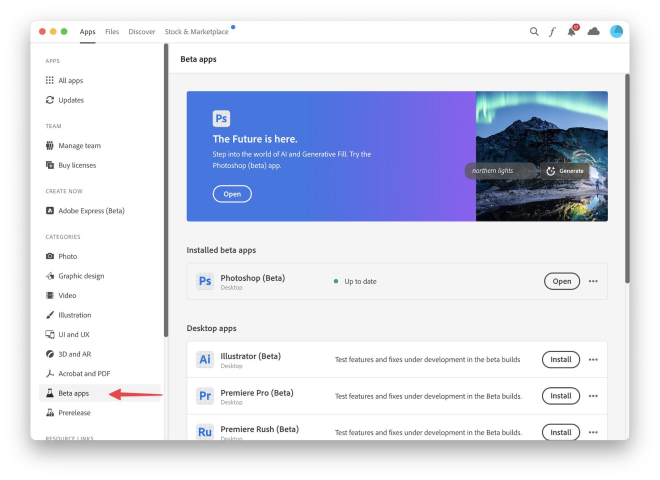I am 36 years old. I believe this makes me just old enough to be in a position where I am presently bearing witness to the recently achieved, artistic success of a handful of friends. I believe I am witnessing what I am witnessing among these select colleagues because it takes roughly ten years to really make it, and so those colleagues of mine who are 1) roughly my age and 2) got started in their mid 20s are now just ripening.
It has been inspiring — to observe these creatives, to watch their stories play out over the years. It’s also revealed some patterns. When I look at their trajectories, from their very first days in their field to their very first, real validations of success, here is what I see: an ordinary, unassuming start; a rather uneventful first five years; a tipping point, followed by a snowball effect wherein impactful things start happening with greater and greater frequency; and then, right around the ten-year mark, something really positive happens that marks the arrival of that person’s artistic success.
My friend Susan McKinney’s ceramics career follows this pattern; I was lucky enough to have had a front row seat to most of it. Her first ten years are chronicled briefly below. It’s her hope and mine that this at-a-glance peek at her first decade in ceramics will inspire you to launch your own artistic career—and to stick to it for the seemingly very necessary span of at least ten years.
An At-A-Glance Look at One Ceramicist’s First Decade

Years 1 – 2: Ceramics classes at a community studio
An Oklahoma native, Susan McKinney gets her first job out of industrial design school and moves to San Diego. She loves the beaches but, as the months pass by, she starts feeling unhappy at work. She doesn’t like designing cell phones. She doesn’t like sitting at a computer all day. So she signs up for a ceramics class at a local community studio. “Ceramics has this long history of having therapeutic qualities,” Susan says. “That’s why so many people do it as a hobby. I had no idea it would be an influential part of my life, like it is now. I just did it because I got good feelings from it.” And so she continues at the community studio, for roughly one day a week, on and off, making little pots on a kick wheel, for the next two years.

Years 3 – 5: Weekend pottery classes in San Francisco
In 2010, Susan gets a new job at an industrial design firm in San Francisco. “You know how it is when you move,” she says. “It’s stressful. I knew I needed to sign up for a pottery class. I knew it was a way that I could be grounded—a way for me to keep my shit together even if it was just for a few hours at a time. So I just kind of continued. It was never all that serious. It was just a way to relax on the weekends. I’d go for months without doing it. But I always knew I should keep doing it.”
Year 6: The hand-building discovery
In 2013, Susan starts rolling out clay, just like cookie dough, on her dining room table. She cuts patterns and pieces out of it. She starts twisting and braiding the pieces together, curling them, blending them together by hand. No longer does she need a classroom and access to a wheel. With hand building, she can work from home when she has time, then fire the pieces at the studio later. “On week nights, after work, I’d get a burrito on the way home, eat half of it, then get to making stuff,” she says. The flexibility helps Susan work on ceramics more often and more deeply. “I felt free when I was doing it,” she says. “Once I started hand building, I dove in a lot deeper. I got more and more into it.”

Year 7: Elaborating on a technique
Susan keeps hand building at home, then firing her work at the studio. The pieces are small—mostly jewelry—but she’s always trying new things. One day, she starts weaving the clay. “I was already using twisting and braiding techniques to make jewelry,” Susan says. “I really just took those basic ideas and expanded them—doing things with clay that are usually done with fabric.” Around this time, Susan sees an old, beautiful basket at her grandmother’s house. She decides she wants to weave a basket out of clay.

Year 8: Reaching a breaking point
When it comes to ceramics, Susan has ideas and techniques that excite her. But she has no time. Her day job in San Francisco is stressful. She works long hours. “I reached a breaking point,” she says. “I wanted time. I wanted time to focus on the thing that makes me happy.” What if she took a few months off of work? She saves money and starts applying for residencies. She is accepted to two: one in Greece and one in Denmark. She takes a 3-month sabbatical from work and packs her bags.
Year 9: The Sabbatical
In both Greece and Denmark, Susan’s accommodations are in quiet, rural communities. She has access to materials and a kiln. And, she has time. For three months, she works on nothing but ceramics. Increasingly, her work becomes more three dimensional. “In Greece, I made a basket every day,” she says. “In Denmark, I saw these beautiful flowers, and I started weaving petals together.” Abroad, Susan realizes two important things: the first is that, with dedicated time and facilities to make things, her work is progressing quickly. The second? That she is very happy. She writes a letter to her boyfriend: “If I’m this happy doing this, then I would be stupid not to keep doing it when I get home, right?”

Year 10: Making time, making space, making it big
Back in the States, Susan returns to work. For six months, she works while hunting down contract work. When she has enough, she quits her day job. With more control over her schedule, she’s able to split her time between paying work and her ceramics pieces, which are becoming increasingly complex and difficult to transport. “You can only do this at your dinner table for so long,” she says. Susan becomes a member at a new studio where she can both work and fire; her work continues to evolve. A short time later, a friend shares Susan’s work with her connections at a high-end home goods manufacturer and retailer. The result? The retailer commissions Susan to work on a housewares series.
“It sounds so cheesy,” Susan says, “but it feels like my dream has come true. It took time—I think that’s where people get frustrated, when things don’t happen right away—but you just keep making little, deliberate choices. And you have to keep making them. And then everything will come.” •

See more of Susan’s work on her instagram @skinnyceramics.




